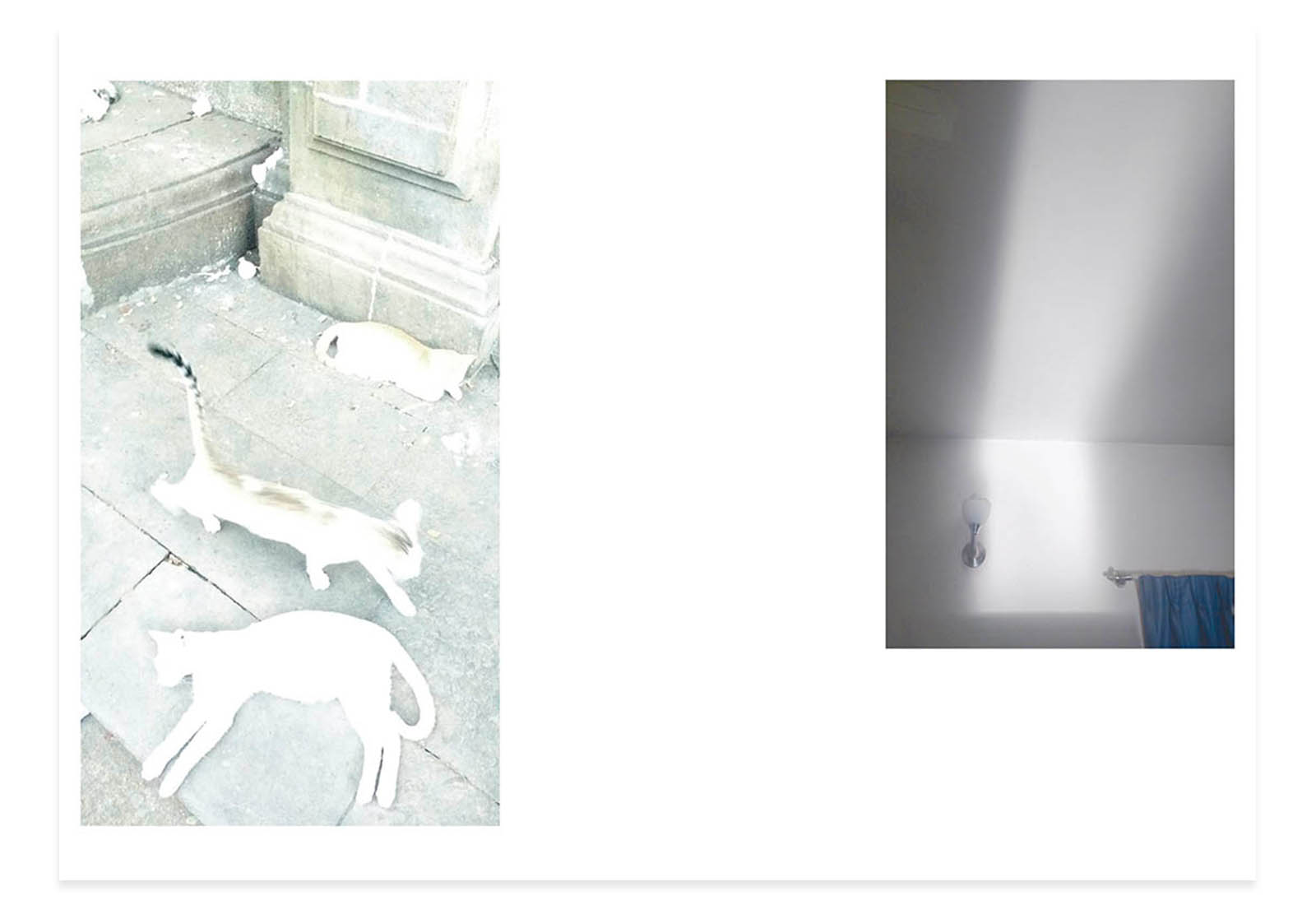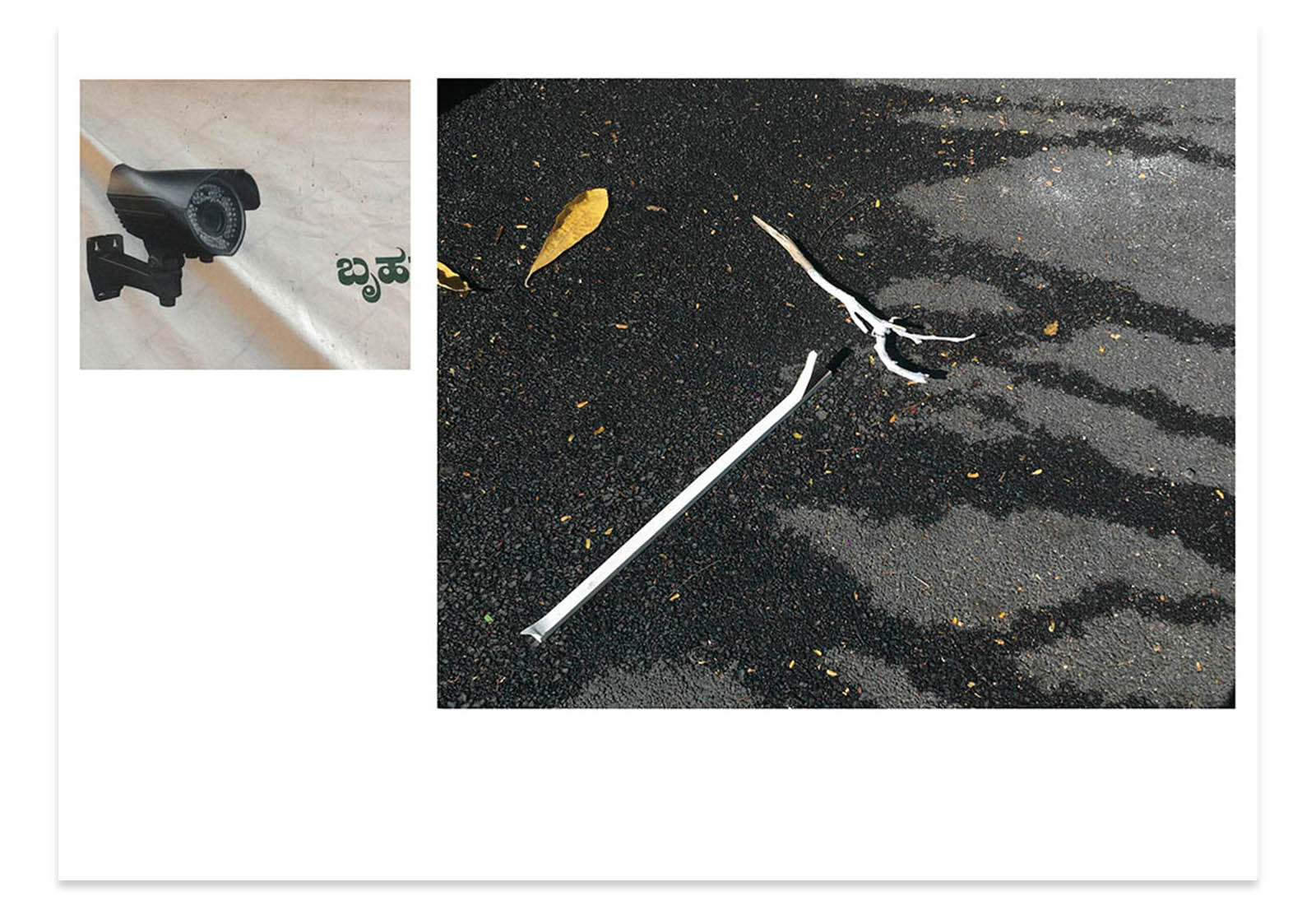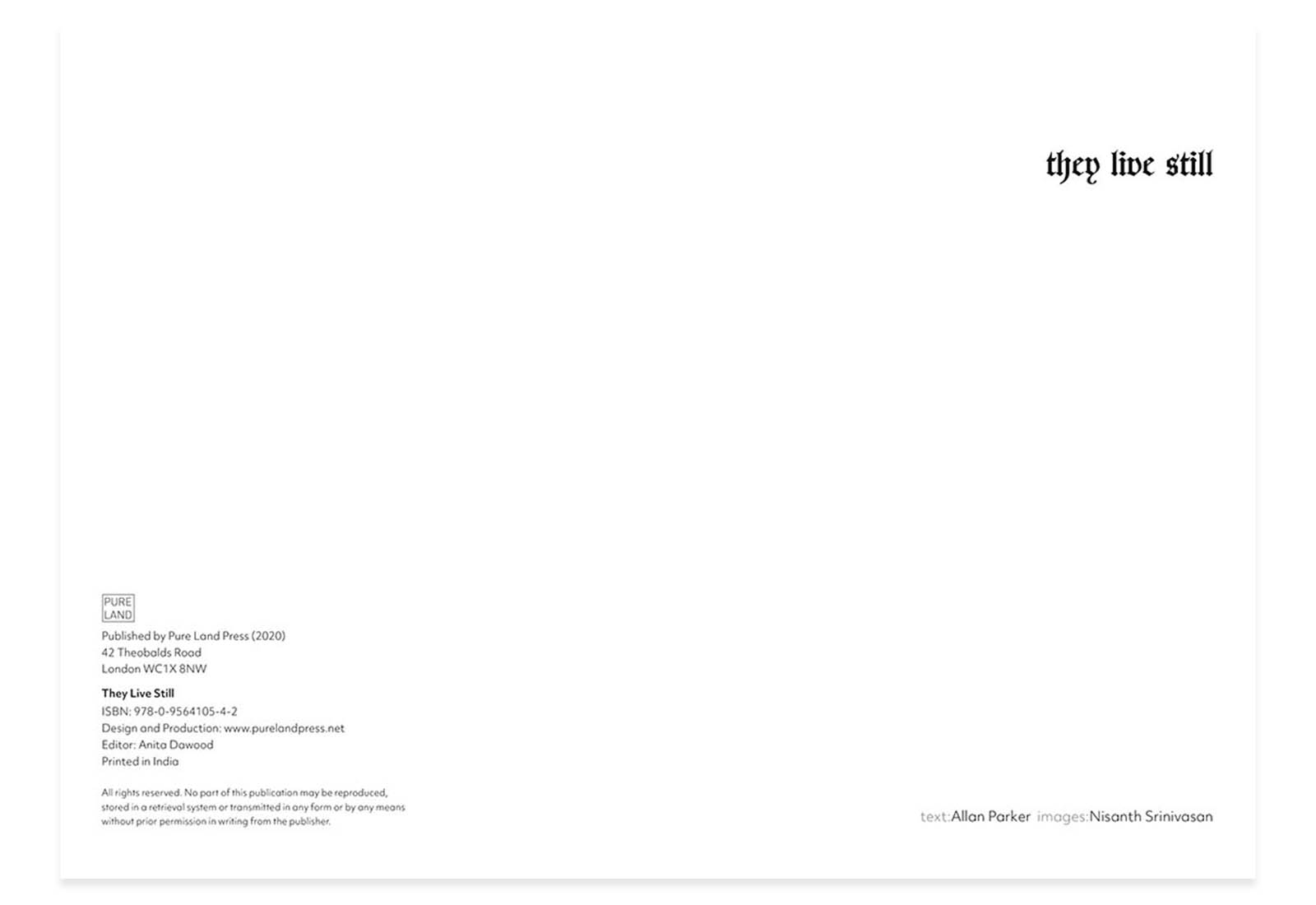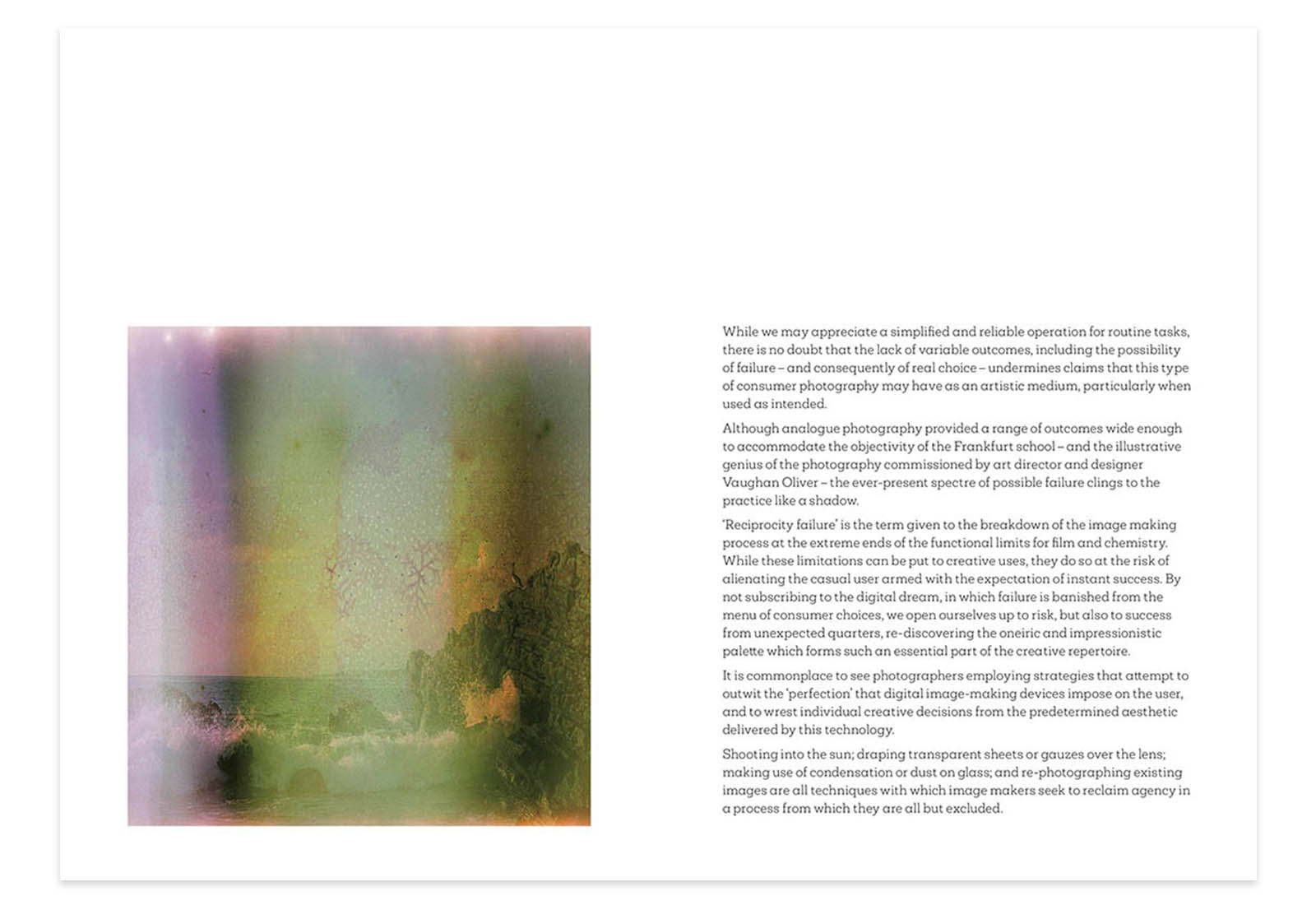






They Live Still
Nisanth Srinivasan and Allan Parker
Full colour
76 pages
Section-sewn
Swiss (open) binding with 2-color screen-printed cover, blind embossed title.
They live Still features the photographic work of Nisanth Srinivasan accompanied by an essay by Allan Parker
Nisanth Srinivasan is a young visual artist based in Bangalore, India who has only recently begun to use stills camera and film to make photographs. However, his work recreates the look and feel of analogue images, using digital files and a range of photographic techniques. These include re-photographing found images and scanning the pages of old books and magazines. Why does a contemporary image-maker foreground this strategy in their practice?
Here are his thoughts on the processs:
- The images in They Live Still are essentially observational records of my experience around media, culture, decay or even general existence — all shot through a combination of accessible technology at different points in time, be it a phone camera or an automatic point and shoot film camera. So in a way, I’m recording, internalising and acknowledging different aspects of my day to day life in Bangalore.
- Texture and tones play a large role in my images— stemming mostly from painterly instincts, which I consider the root of my image making process. In the past, I have reflected upon this and understood that my obsession with physical filters is purely painterly— the shapes are obscured by natural layers, digital grain, camera processing….in a way it’s interesting that imaging technologies are supposed to give you these neat, smooth, sterile images and shooting through natural filters in a subtle way frees me from these limitations.
- Seeing my images in the form of a book seemed like a natural furthering of my way of looking at things, my “practice,” so to speak— beginning with painting and drawing on paper, to working with a limbo space between the digital and the analogue and applying this vision to print media. Producing images for a physical artefact like a book has become a definite and real possibility of stringing together a narrative in many interesting, physical, textural ways.
The accompanying essay by Allan Parker considers ways in which digital technologies often fall short in their offer image-makers.
“Contemporary life includes bonds with the past which cannot be so easily discarded. For urban dwellers, the built landscape forms the bedrock of the look and feel of the world ‘out there’. Residual grime and combustibility threaten to disrupt any dreams of a perfected, marketable present; a project which requires a vigorous edit of the surroundings to produce sufficiently idealized images to grease the rails of commercial ambition.
The creation of mood and atmosphere provided by the material aspects of photography – in which we could include printmaking techniques as well as the presence of ‘poor’ images, all conspire to populate a psychological landscape replete with mystery and banality; its hues and textures seeping across the tonal range of anxiety and desire.
“…An act of analogue rebellion in an obnoxiously digital world” [1]
[1] Teju Cole
Smell the ink and drift away: why I find solace in photobooks, https://www.theguardian.com/artanddesign/2020/feb/24/teju-cole-photobooks-fernweh?fbclid=IwAR0ESFuss7qTVIBD5WYuXFo2X7XEX32bb7csg-NB7XILxtWzKJzspbJrfgo

